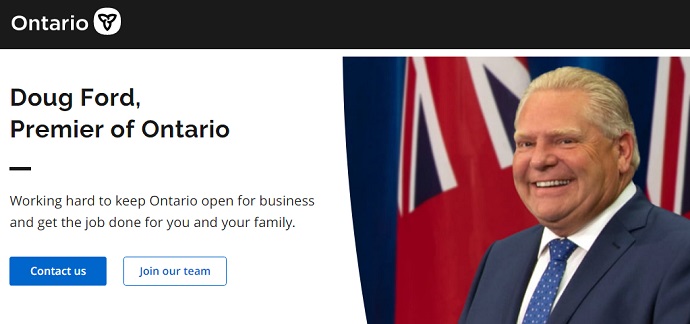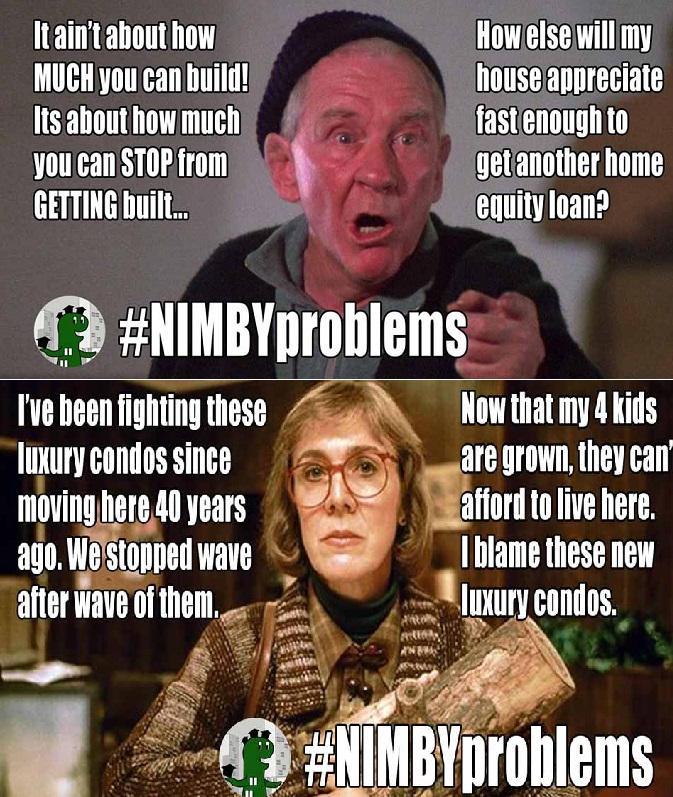Ontario’s New Housing Growth Bill — The End of the NIMBYs
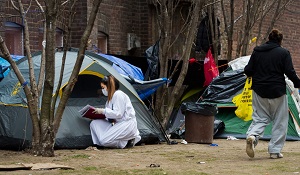
People across the US and Canada have been suffering through a nightmare without complaint for too long. That nightmare is ridiculously high home prices and rent prices, painful taxes, and a severe lack of housing stock.
The high prices are creating a host of difficult issues from stress to poverty to social problems. Few in power have had the courage to face up to the people creating the problem and push to solve it.
The problem is pervasive, but in the Vancouver and Toronto areas, it’s ruining people’s lives. With the Fed Liberal leader pulling in 500,000 immigrants more per year, and building no housing to accommodate them, Toronto region residents and Vancouver residents look at more pain ahead.
The drafting of these immigrants into Canada, to harvest future votes, amounts to near criminal action given the fallout in homelessness, rising social program costs along with higher rent prices which are going to occur.
An insignificant, isolated group of privileged wealthy, self-licensed individuals have managed to capture a lot of political power for their own financial gain. And despite the obvious suffering of Canadians long term, they don’t care. The restriction of real estate is all about political gains, greed, and the power of executing dictatorial housing regulations for others to comply with.
And with Premier Rob Ford being harassed for opening up greenbelt land for housing development, and a criminal investigation suggesting, you can see how the wealthy can use legal channels to get their way. Homebuyers might believe they’ll get their million dollar dream home at current prices, but in fact, when the economy returns, home prices and apartment rents will rocket. The problem has to be dealt with now.
Ontario Going Banana?
Ontario Municipal Affairs and Housing Minister Steve Clark is quoted in the St Catharines Standard: “I know that NIMBYism — not in my backyard — is really strong in Ontario… But you know, I used the phrase after we tabled Bill 23, the fact is that we’ve now transcended from NIMBYism to BANANA — build absolutely nothing anywhere near anyone.”
A Crack in the Fortress Walls
The Ontario government’s newly announced housing legislation Bill 23 is a breakthrough in government relationships with the people.
This new legislation offers to help speed up the building of housing across the province which is so desperately needed. It’s a wonderful thing for Ontarians who are now struggling to pay for their food. We’re all wondering how did it get to this?
The new pro-housing bill been passed and given Royal assent and is now law. If this groundbreaking law is successful, many jurisdictions across Canada and the US may look to adopt it as well.
Groups Plot to Stop New Housing for the People
To counter, the Federal Liberal party, NIMBY groups, and the political activist group called the Canadian Press is attacking the Ontario government for freeing up land for people. That attack implies this Ontario government initiative is about putting homes in wetland swamps and that the GTA green belt wall was not just a scam created by a previous liberal regime in Ontario years ago.
These dishonest media reports indicate that anyone wanting to improve housing and create affordable prices is in for a battle. The enemies are clear: local municipalities, NIMBYs and media cartels (awarded broadcast licenses) who promote their agenda. Let’s explore their agenda and how we can defeat them. For some, it’s a life or death issue.
Municipalities and NIMBYs
The group known as not in my backyard activists along with local municipalities and regional governments work together to stop development, and to tax new construction projects to the max. That in turn dries up the profitability of development initiatives so developers give up and walk away.
NIMBYs are feeding at the trough. The housing problem today is due to restrictions (IMHO) which we’ll talk about below, via most cities and local municipal governments. These groups conspire in the predatory practices of levying, taxing and blocking housing development in their areas. They’ve found ways to pressure, undermine, delay permits, raise building costs, and legally extract fortunes from anyone wishing to build homes in their regions.
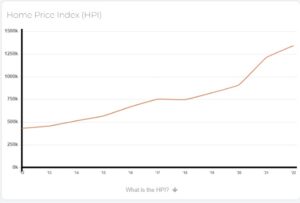 NIMBYs oppose all construction, whether houses, apartment buildings, or anything that smells of progress. They have no political affiliation about this because to them, it’s a personal thing. Yet they and local governments have financial reasons to ensure housing prices remain high and low supply is available — it fattens their wallets.
NIMBYs oppose all construction, whether houses, apartment buildings, or anything that smells of progress. They have no political affiliation about this because to them, it’s a personal thing. Yet they and local governments have financial reasons to ensure housing prices remain high and low supply is available — it fattens their wallets.
Stopping these regressive groups will go a long way to reducing home prices and rent prices. When this recession ends, demand will return and home prices will skyrocket once again. Until the source of the problem is recognized, housing will remain a key source of grief for everyone.
Ontario’s Renters Worst Hit
All losses or costs are passed onto renters, who never get a break. Without sufficient rentals, they are either homeless or must pay exorbitant, unaffordable rent prices.
 Renters must work even harder to pay their rising rents and utility bills (Zillow report). We won’t get into high utility costs in this post — that’s yet another related racket.
Renters must work even harder to pay their rising rents and utility bills (Zillow report). We won’t get into high utility costs in this post — that’s yet another related racket.
The damage and pain to Ontarians who suffer a rising plague of social problems each day is never discussed by the media. The media works to obscure the source of excessive real estate costs to avoid exposing NIMBY/government regulations of local housing markets.
The point of this post is that this injustice, and the solution — to open up land for development in southern Ontario and support home and multifamily construction away from overcrowded, high-cost Toronto. Building more in Toronto in fact, won’t escape the high costs of living and doing business there. The real answer is ex-Toronto.
It’s the same situation in the US, where urban housing markets offer no solace and little hope of a solution.
An example of that appears in this article from Planetizen:
Community opposition in the permitting stages frequently leads to increased costs and delays in many affordable housing projects. That’s something many developers don’t want to deal with. When NIMBYism is expressed through exclusionary zoning, it can keep affordable housing out of certain communities altogether.
NOT IN MY BACKYARD
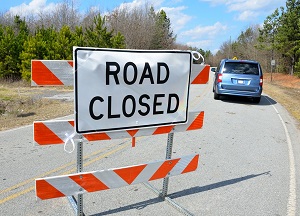
Not in My Backyard groups are composed mostly of wealthy locals who manipulate local and regional government officials to do whatever it takes to keep out new developments in their neighborhoods and towns.
The problem is so pervasive, that builders can’t build anywhere. There is a regulation for everything. That means no housing for growing populations including immigrants. NIMBY’s too can block any attempts to create housing such as granny flats, building conversions, and house divisions.
Some NIMBYs feel a sort of evangelism about keeping “the unwanted” out of their communities which has spawned accusations of elitism and racism. As this NY Times post suggests, their era is about to close.
Justin Trudeau is pulling in 500,000 more “voters” each year from Liberal friendly countries. These urban liberal voters try to keep everyone inside Toronto or Vancouver and pour more people via immigration into them. These immigrants need rental housing, medical services, education, and social assistance which is placing a huge burden on all levels of governments and the tax payers who must provide the funding for all of this nonsense.
Is OREA Doing Enough?
Realtors need to do more. More houses/apartments mean more sales transactions. There are diplomatic complaints from TRREB, but they might need to take the gloves off. The Ontario Real Estate Association formally opposes these “Archaic zoning laws” and recommends a redrafting of Ontario’s harmful regulations.
The result of NIMBYism is ultra high home prices, unaffordable rent prices, poverty, and near zero vacancy rates. The Ford government’s bill threatens to loosen the local municipalities grip on housing and Ontario tax payers, and may crush the power of the NIMBYs.
Promises, Promises
With immigration high and housing stock limited, this issue has become so troublesome, so painful to real people, something had to be done. It took Doug Ford a long time to get around to it. Can we trust him to follow through?
Just before he was elected, he said his party would lower real estate prices. 4 days later he was forced to retract that statement. Yet voters didn’t hear about the retraction, and probably voted for him because he said he would cut prices. That’s politics right?
We should be asking how these NIMBYs, housing association boards, and local municipalities and regional governments came to control real estate, and why nothing has been done about it. Let’s delve into that.
Severe Housing Shortages Hurt Families
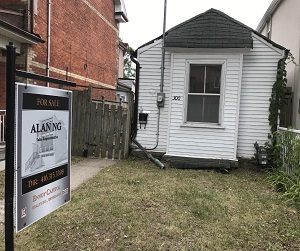
The Toronto housing market and other rental markets in Ontario, Canada are grossly undersupplied and have been for many decades now.
Due to massive numbers of new immigrants into the Toronto GTA region along with NIMBY building preventions and a strong economy, home prices have rocketed. And yet, many Torontonians can’t find a place to live. In central Toronto, home prices reached an average of $3 million and north in Aurora, home prices reached $1.6 million average.
Taxes on these properties are a source of lottery-like cash windfalls for local municipalities. And the Not in My Backyard bureaucrats are making life even more difficult for those who don’t own a million dollar house.
If you do a search for “Bill 23, More Homes Built Faster Act, 2022″, you’ll see how many NIMBY organizations oppose the bill. And you’ll see how big this unholy union is.
They claim it will undermine nature, put municipalities revenues down by $BILLIONS, and undermine current housing programs (which are chronic failures). Ford’s government had announced it would increase its spending by 8.6% or $20.7 billion each year until 2024, inflating the Ontario budget deficit. And where was the outcry about that from the NIMBYs?
The fact is, as we’ll discuss here, there are big number of privileged municipal fat cats who want to tax people to death to enable profligate spending, and because they couldn’t make it on Federal/Provincial debt spending received. These municipalities have run into huge debt loads with bad practices and objectives, and encouraged high taxes and overregulation to keep their regimes running.
No that things are unraveling, they face not being able to fund their regimes any further.
What Ontario Premier Doug Ford’s new bill represents is the end of their feeding at the trough. And they’re up in arms about it.
NIMBYs have a well-established and even sophisticated strategy to stop housing development and they’re not done yet.
The Cause of High Home Prices
I cited the cause of low supply and outrageous home prices in other posts. Control of local land was ceded to regional and local governments who of course wanted to keep newcomers out while maximizing revenues from anyone who came in.
These laws made local municipal land regulators veritable land barons as they could decide what small plots of land they would allow construction to happen on. They’ve had total control and have abused that privilege.
Taxation in cottage country regions made them rich as well. In Muskoka, taxes are ridiculous with almost no services delivered.
The Fake Green Zone
A no build zone around Toronto was established by the Liberal government in 2005. It was proposed that it was to protect the environment, and that may have helped capture (votes) from political party funders and nature conservancy people.
This so called Green Belt wrapped suspiciously around Toronto, also helped to trap tax payers in the GTA where they be would be forced to keep working to pay off Toronto’s massive public debt, and keep businesses from fleeing to cheaper regions.
The nature conservancy/climate cloaking tactic is overused in politics and doesn’t work any longer.
The belt also allowed the Liberal government’s plan to spend profusely on high density infrastructure within the GTA, something that is extremely expensive to manage and maintain. The aging TTC alone is a crushing burden on Toronto’s government.
NIMBY’s Ceded Control over the Kingdom
Developing housing anywhere near cities in Ontario (or across Canada and the US) is a bold venture. Local NIMBYs have reigned with absolute tyrannical control over land use in cities, suburbs, and rural towns. And provincial laws too make it impossible to find land to build on. Everything is off limits due to zoning laws and ridiculous requirements for development — hardly the hallmark of a free society.
Few have complained which is the oddest issue of all. That could be evidence that the spirit of the Ontario people has been broken, and that it is time to fight back in a wave of support for housing development. We’ll all benefit.
In fact, new housing development creates jobs for local suppliers, builders, Realtors and even NIMBY government offices. It helps build new schools, sports centers, libraries, retail areas and new communications infrastructure in rural areas. How they argue about extra tax revenues?
It seems a lot of people agreed with the steep rising prices of homes, perhaps because they liked seeing their own home value estimate on paper. The more development was restricted, the higher prices went. And when lumber, steel, and other materials were restricted or monopolized, prices rose even higher.
Land and Building Permits: Frustrating if not Impossible
At the local level, developers and builders and even renovators could not acquire building permits. Sometimes they were burned badly when local governments held out for years, thus they suffered interest expenses that ate into their profitability.
Perhaps that was warning to builders/developers to not bother coming into their communities again.
Anti-NIMBY Sections in the New Bill 23: More Homes Built Faster Act, 2022
One clause in the new Ontario housing development bill reads:
1 Section 111 of the City of Toronto Act, 2006 is amended by adding the following subsection:
Regulations
(7) The Minister of Municipal Affairs and Housing may make regulations imposing limits and conditions on the powers of the City to prohibit and regulate the demolition and conversion of residential rental properties under this section.
This means the province can prevent the Toronto City NIMBYs from stopping pro-housing efforts. Converting old buildings is a great way to build affordable units in the city. And Toronto home prices have been some of the highest in North America, inviting speculation and attracting more foreign buyers. They’ve created their own mess.
Local Governments Feeding 24 hours a Day at the Hog Trough
These local governments too became addicted to the high lot levies and other fees they charged anyone involved in building a home. Lot levies in some communities were $50,000 per lot, and the houses they were building might have been priced at $300k to $500k.
Toronto initiated a land transfer tax of sickening numbers and it just made buying a home tough. Development slowed and inventory plummeted. The problem ran down into the rental market too raising prices and lowering vacancies. That has created numerous social problems (crime, drugs) which then cost the Ontario government to manage.
The New Housing Development Bill for Ontario: Bill 23
Ontario Premier Doug Ford announced the plan a month ago. The Bill 23 housing plan is to build 1.5 million homes within 10 years. Skeptics and political opponents are trying to talk it down and sabotage it of course.
The premier says his ambitious plan is vital because “hardworking families are counting on us, and our government will do what it takes to get more homes built faster.”
Ford is backing the plan up with incentives for builders and developers. Additionally, their government announced raising the speculation tax for foreign buyers in order to suppress demand.
Toronto government officials are worried this amazing new plan will cost them $230 million dollars. So you’d ask, how could building all those homes cost them a fortune?
Steep inflation and a stagnant Ontario economy could reduce the projected build to only 80,000 new homes a year in the next couple of years.
A CBC report says “The province has identified 29 municipalities in which the bulk of new housing will need to be built in order to reach that provincewide goal, and will require them to develop pledges of how they will meet their assigned targets, though there are so far no consequences for falling short. Toronto will need 285,000 new homes, Ottawa will need 151,000, Mississauga will need 120,000 and Brampton will need 113,000.”
Focus on Far from the GTA Region for Expansion
Building 285,000 new homes and apartments in Toronto 416 or 905 area codes sounds doubtful.
The real plan should be to build in outlying cities and promote business relocations to those cities. That assists housing and helps grow Ontario’s economy and reducing the cost of doing business for companies.
Cities such as Orangeville, Mississauga, Cambridge, London, Waterloo, Guelph, Barrie, Orillia, Uxbridge, Newmarket, Peterborough, Kingston, Sudbury, North Bay, and others are perfect choices for affordable expansion.
Given so many sellers want to get out of metro Toronto, these new homes would be perfect for the lifestyle they seek.
The building of some many homes could boost Ontario’s GDP considerably thus fueling demand for furniture, building supplies, materials, construction services, restaurants, road building and utilities, and creating new jobs in local government offices. Everyone wins if the new housing plan can be successfully implemented.
The top threats are the deliberate push to recession in the US, and political interference within Ontario.
Ending the NIMBY Cartels
There are a lot of self-licensing, fat cats that make up the NIMBY cartels. Clearly, the control of real estate needs to be brought back to the provincial level and even Federal level to protect the rights of Canadians to have a home to live in.
Left with the NIMBY cartels, we could suffer massive homelessness in future. Trudeau has set big numbers for immigration and most immigrants head straight for Toronto or Vancouver where housing is less available.
We need to be louder in opposition to anyone who attempts to stop housing development for whatever reason. The point is, housing is essential, not a discretionary expense. And if rent prices rise too high, it means workers are using most of their income just to pay rent. That’s not much of a life, and we should step in to protect them.
Toronto Housing Market | NIMBY Affect on Housing Market | Affordable Housing | Rooftop Condo Pools | Toronto Housing Market Crash | Toronto Condo Market | Calgary Housing Market | Vancouver Housing Market | Mississauga Housing Market | Kelowna Vernon Housing Market | Real Estate Housing Market Forecast | Housing Market Crash | Best Cities to Buy Property | Real Estate SEO Specialist | Real Estate SEO Company


